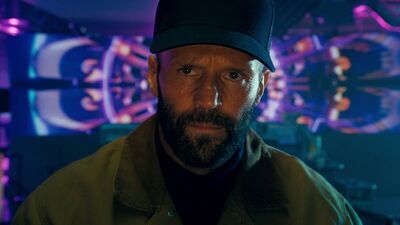All of the great directors know how to get out of the story once it’s over. You can argue about the advisability of the running times of certain films by Martin Scorsese, Stanley Kubrick, David Lean, Akira Kurosawa, or Sergio Leone, but rarely about their choice of when and how to end things. Think of “The Good, The Bad and the Ugly” going out on Eli Wallach being shot down from a noose by Clint Eastwood. Or “2001: A Space Odyssey,” which takes its time getting into that cosmic hotel room, but as soon as the Starchild turns to show its face, ends the movie.
There are contemporary filmmakers who get how to get out. Bong Joon-Ho is a modern master of endings. David Fincher is good at endings, even when the ending isn’t exactly the ending. “The Killer,” a tight two-hour movie, has an “epilogue,” but it lasts less than a minute. Wes Anderson never spends a second longer in his fictional worlds than he has to; even “The Grand Budapest Hotel,” which has framing device upon framing device upon framing device, he exits all of them swiftly once old Zero is done with his tale. The Coen Brothers have a nearly impeccable track record when it comes to endings. Even the ones that are generally thought of as lesser (like “The Ladykillers” and “The Hudsucker Proxy”) end with elegant brevity. The final shots of most of their films rank with the best final shots in cinema, whether it’s the bowling ball hitting a strike in the background in “The Big Lebowski” or the closeup of Gabriel Byrne in “Miller’s Crossing” where he grasps the brim of the hat he’s been chasing and pulls it down tight on his head.
I don’t know when the modern era of end-bloat began—maybe with 2004’s “The Lord of the Rings: The Return of the King,” which had 15 minutes of epilogue(s) after the main action had wrapped up. But at least that had the excuse of being a three-film epic based on a book that took 100 pages to finish. Movies should have a shape, just like a sculpture, a table, or a person, rather than being the equivalent of a sleeve of cake icing that’s open at both ends and leaks everywhere.
Shape is at odds with the idea of “content.” The point of creativity now—according to the hedge fund guys who don’t care about movies or TV but are increasingly in charge of them—is to create (or revive, or clone) something in order to create an endless stream of monetizable situations and properties. Movies, especially, now seem to have trouble remembering how to be movies. They’ll introduce characters and story elements that don’t have anything to do with the thing you’re watching but are just there to generate buzz on social media and act as advance marketing for something that hasn’t been made yet (and might not be). And they don’t know how to end. In the age of Marvel/DC they’d even tack on a mid-credits and post-credits scene, many of which amounted to nothing because the franchises forgot all about them. Matt Reeves’ “The Batman,” a very good movie on a familiar subject, has what feels like four, possibly five endings.
It’s starting to feel as if nobody knows how to play this particular game anymore. That’s why it’s so exciting to encounter someone who does.

